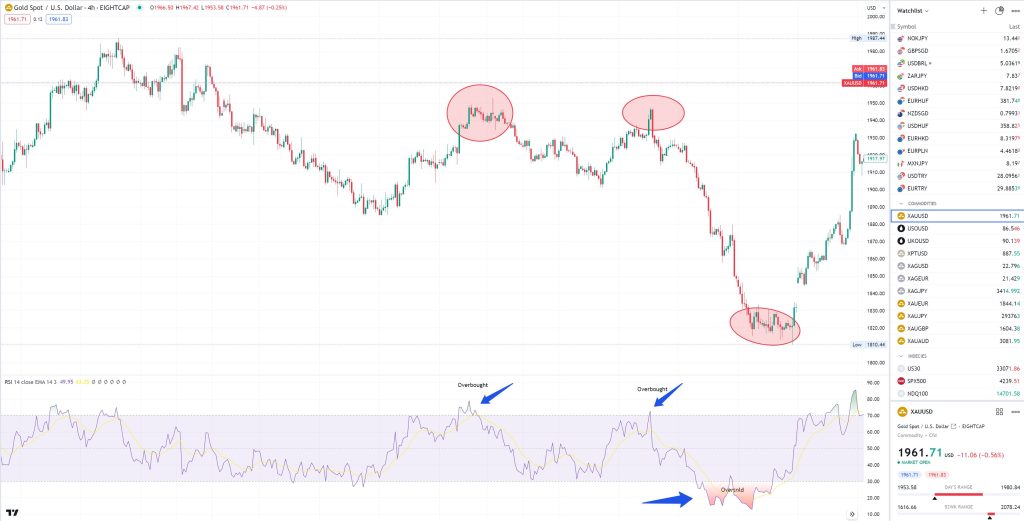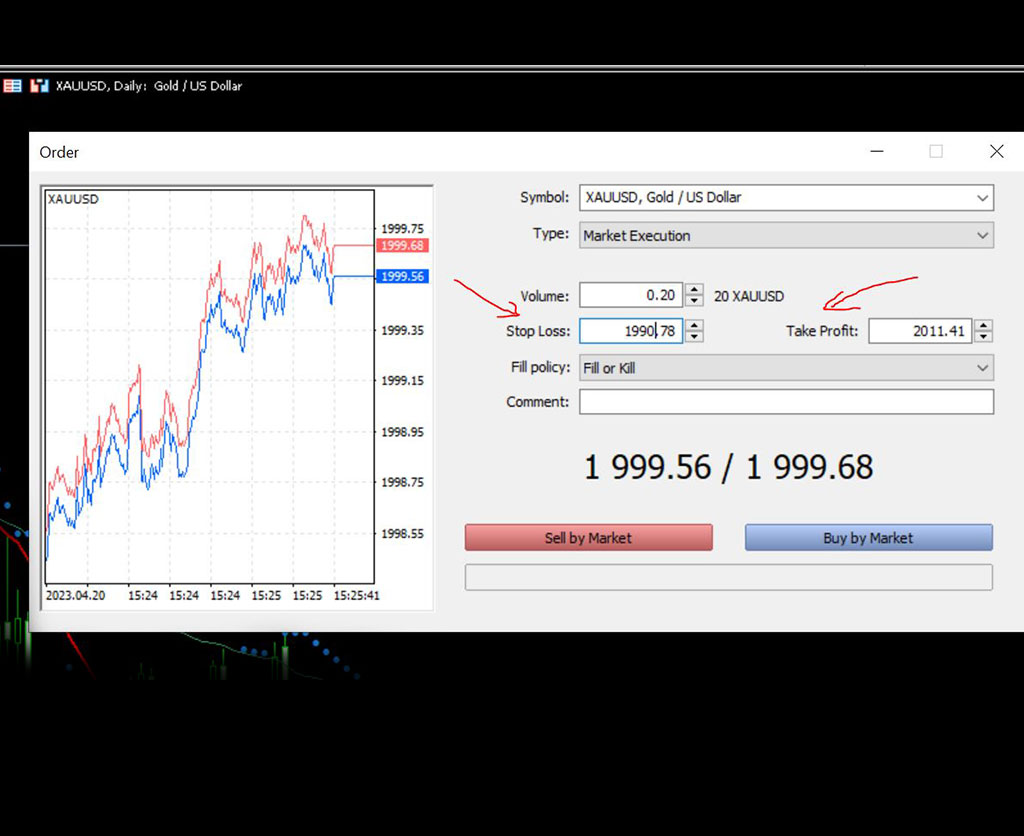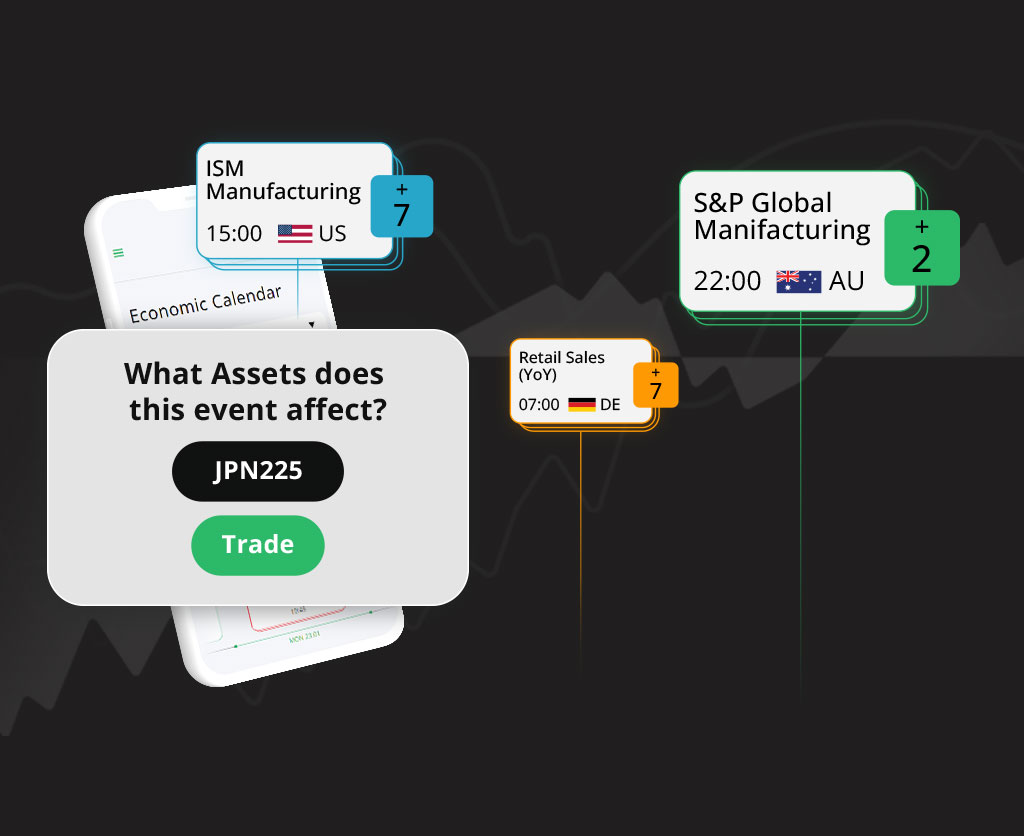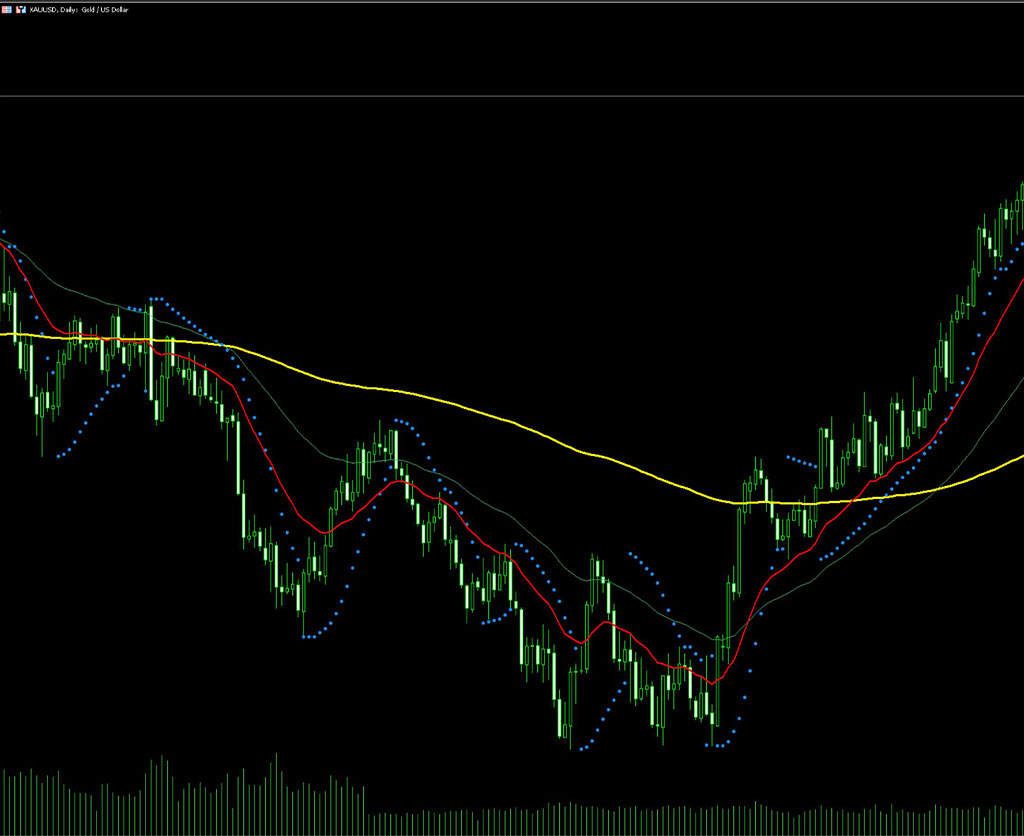Day trading Gold

Gold is a highly volatile asset, meaning that its price can fluctuate rapidly. This volatility can create opportunities for traders to make profits by buying and selling gold quickly, but it also increases the risk of losses.
Traders who are considering day trading gold should carefully consider the risks involved. They should have a clear understanding of the factors that can affect the price of gold, and they should have a well-defined trading plan. They should also be prepared to lose money on some trades, and they should have a risk management strategy in place to limit their losses.
Identify the trend:
The first step in a day trading strategy is to identify the overall trend of the market. Traders can use technical indicators, such as moving averages, to identify the trend direction..
Use technical indicators:
Day traders often use technical indicators to identify potential entry and exit points. Some popular indicators for Gold day trading include the Relative Strength Index (RSI), Bollinger Bands, and Stochastic Oscillator.
Determine entry points:
Once the trend has been identified, day traders can use technical indicators to determine entry points. For example, if the RSI is below 30, it may indicate that Gold is oversold, and a trader may look to buy. Support and Resistance levels are also in good aid.

Set stop-loss orders:
Day traders should always use stop-loss orders to limit their losses if the trade goes against them. Stop-loss orders can be placed below the entry point to minimize losses.

Use take-profit orders:
Traders often use take-profit orders to lock in profits when a trade goes in their favor. Take-profit orders can be placed at a predetermined level of resistance to help secure profits. Like stop-loss orders,, take-profit orders are not always guaranteed.
Monitor the news:
You should also monitor news and economic data releases that may impact gold prices. For example, if the Federal Reserve announces a new monetary policy, it may impact gold prices and present new trading opportunities. In that regard, you are more than welcome to check our AI state-of-the-art Economic Calendar offered in your portal on the website.

Adjust the strategy:
Customize your strategy based on the current market conditions. For example, if the market is highly volatile, you may need to adjust your stop-loss and take-profit orders to account for larger price movements.
Some examples of entry and exit points for a gold day trading strategy could include buying when the RSI is below 30 and selling when the RSI is above 70.
When it comes to risk management, day traders should always be aware of the potential risks involved in this strategy. Some techniques to manage risk include using tight stop-loss orders, only trading during high liquidity periods, and limiting the size of trades to a small percentage of your overall account balance.
Here are some of the most popular indicators that you may find useful:
- Moving Averages: Moving averages are commonly used by traders to identify trends and potential support and resistance levels. The 50-day and 200-day moving averages are particularly popular among gold traders.
- Relative Strength Index (RSI): The RSI is a momentum indicator that can help traders identify overbought and oversold conditions. When the RSI is above 70, it suggests that the asset is overbought, while an RSI below 30 indicates oversold conditions.
- Bollinger Bands: Bollinger Bands are used to identify potential breakout opportunities. When the price of gold is trading within the upper and lower Bollinger Bands, it suggests that the asset is in a consolidation phase. However, when the price breaks out of the Bollinger Bands, it can indicate a potential trend reversal.
- MACD: The MACD is a trend-following indicator that can help traders identify potential trend changes. When the MACD line crosses above the signal line, it suggests a potential uptrend, while a cross below the signal line indicates a potential downtrend.
- Fibonacci Retracement: Fibonacci retracements are used to identify potential support and resistance levels. Traders use these levels to identify potential entry and exit points.

Overall, the indicators you choose to use will depend on your trading style and preferences. It’s important to note that no single indicator can predict the market with 100% accuracy, so it’s always a good idea to use multiple indicators and perform your own analysis before making any trades.Gold day trading can be an effective trading strategy for traders who are looking to take advantage mostly of short-term price movements. By using technical indicators, setting stop-loss and take-profit orders, and customizing the strategy based on market conditions, day traders can increase their chances of making profitable trades.
Disclaimer
* The information provided here has been prepared by Eightcap’s team of analysts. All expressions of opinion are subject to change without notice. Any opinions made may be personal to the author and do not reflect the opinions of Eightcap.
In addition to the disclaimer on our website, the material on this page does not contain a record of our trading prices, or represent an offer or solicitation for a transaction in any financial instrument. Eightcap accepts no responsibility for any use that may be made of these comments and for any consequences that result. No representation or warranty is given as to the accuracy or completeness of this information. Consequently, any person acting on it does so entirely at their own risk. Any research provided does not have regard to the specific investment objectives, financial situation and needs of any specific person who may receive it. It has not been prepared in accordance with legal requirements designed to promote the independence of investment research and as such is considered to be a marketing communication.
Please note that past performance is not a guarantee or prediction of future performance. This communication must not be reproduced or further distributed without prior permission.


